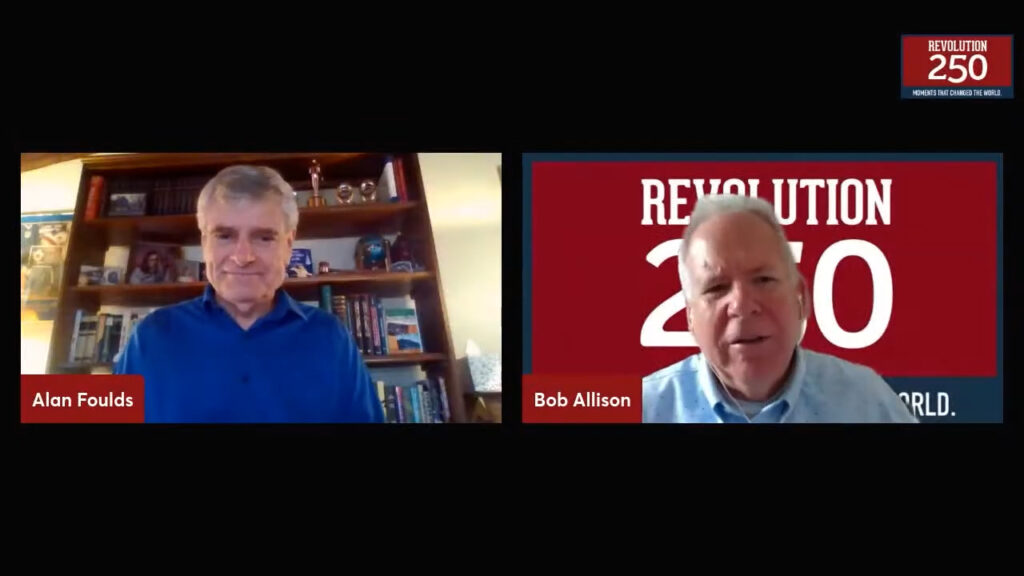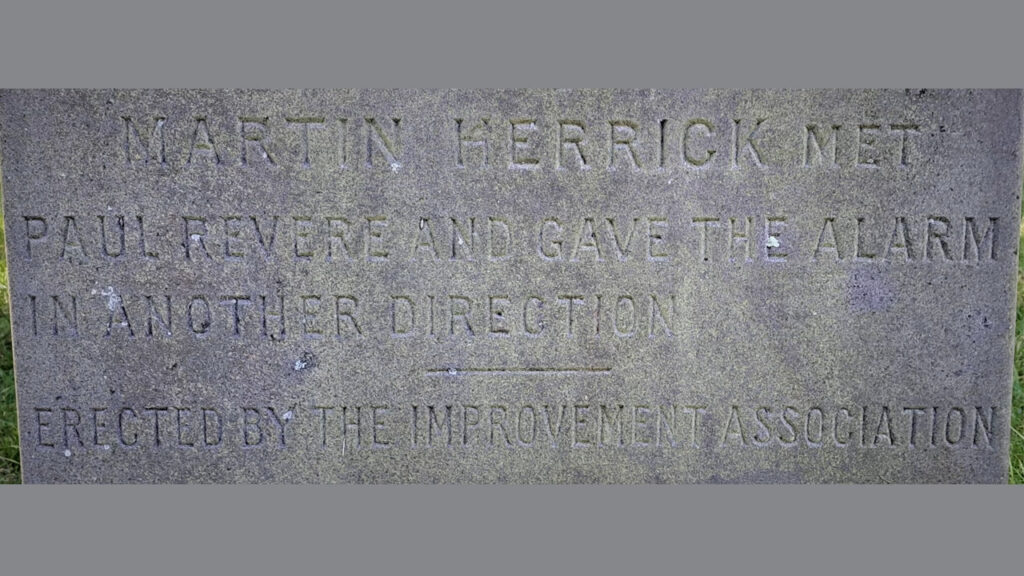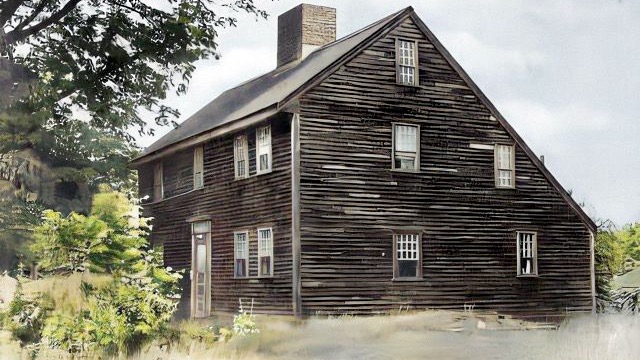The following is an abridged transcript from the Revolution 250 Podcast by Professor Robert Allison (Suffolk University Department of History, Language & Global Culture) in conversation with Alan Foulds on the riders of April 19 and the role of the communities of Lynn, Lynnfield & Reading in the American Revolution.

Allison: Hello, everyone, welcome to the Revolution 250 podcast. I’m Bob Allison. I chair The Rev250 Advisory Group. We’re a Consortium of about 70 groups in Massachusetts working to commemorate the beginnings of American independence, and our guest today is Alan Foulds. Alan is a historian from Reading, Massachusetts. Alan welcome.
Foulds: Thank you very much, this is exciting.
Allison: In addition to being the moderator for 27 years of Reading town meeting, you also have written about Boston ballparks and Arenas Lynnfield two centuries, you’ve written about the Masons in the Revolution, and other things you also have a podcast, “It’s also History, Tails from Alan’s Archives” and now you’re producing a series called “Lynn and in the Revolution.”
Allison: So Reading was in part of Lynnfield?
Foulds: No, I’m involved with both [towns] because I grew up in Lynnfield and lived in Reading for the past 43 years. I am engaged in both the Lynnfield Historical Society, where my father was President for several years, my mother was heavily involved, and I’ve been involved in Reading since I moved here in 1980. There is a connection, Martin Herrick, the Midnight Rider, came to both Reading and Lynnfield.
Allison: So, what can you tell us about Martin Herrick?
Foulds: Well, that’s how I got involved in this. I was a history nerd even as a little kid, and I was fascinated by this marker in the old Burien ground in Lynfield. It’s a tall obelisk that lists all of the founders of the second Parish church and the members of the militia who went to the battle on April 19th. At the bottom, a note says, “Martin Herrick met Paul Revere and gave the alarm in another Direction.” As a kid, I always thought well, I know about Paul Revere and Dawes and Prescott; who’s this fourth guy, and why doesn’t anybody know about him? So I dug into him and found that he was a local doctor and had lived in North Reading before moving to Lynnfield.

He became a doctor, was in town for 40-50 years, married Sally Wright of Middleton, raised two daughters, and was the last person buried in the burial ground. Beyond that, I didn’t know much about him except that there were references to him riding into town up to Gowing’s Tavern and telling of the British advance. Then I got interested, thinking that there must have been others if this guy had notified Lynnfield, Reading, and Stoneham. So I started this 50-plus year digging into the other riders and have found riders all over Eastern Massachusetts, which makes sense because so many of these towns and Villages made it to the battle.
Allison: You’re also involved with the friends of Parker Tavern?
Foulds: Yes, the Parker Tavern is owned by the Reading Aquarian Society, and it is the town museum and probably the oldest place in town. A year after April 19th, after The Siege of Boston ended, after the evacuation took place, three transport ships came into the harbor. They had yet to hear about the evacuation led by Archibald Campbell. They were all captured right away, and Campbell was taken to the Parker Tavern and held there for a few months before eventually being shipped off to the Concord jail; he doesn’t like the jail at all.

He made a plea to George Washington, asking to be freed. He was eventually traded in a prisoner exchange for Ethan Alan. He finally got back into the army and became the military general of Georgia, then later governor of Jamaica, and then he’s buried in Westminster Abbey now.
Allison: Wow, from Parker Tavern to Westminster Abbey.
Allison: Now you’ve also been doing this great History Podcast. These short takes on different things come from your research “It’s Also History Tales and Tidbits from Alan’s Archive.” So, how did you decide to do that?
Foulds: I’ve always been a history nut right from my earliest memories, especially local history. I like to be able to see the places where things happen and imagine what it was like 100 years ago, 200 years ago. I’ve collected many of these smaller stories you don’t see in the history books, and you don’t get taught in history class, and I wanted to put together 10 to 15-minute stories.
An example I recently did was on the Boston Post cane, which was given to the oldest town resident. I did a story on the Pickwick Club disaster, a building that collapsed in 1925 and killed about half of the people there when it was doing the jitterbug, brought down by his song. They’re just things that have happened in New England that people are interested in.
